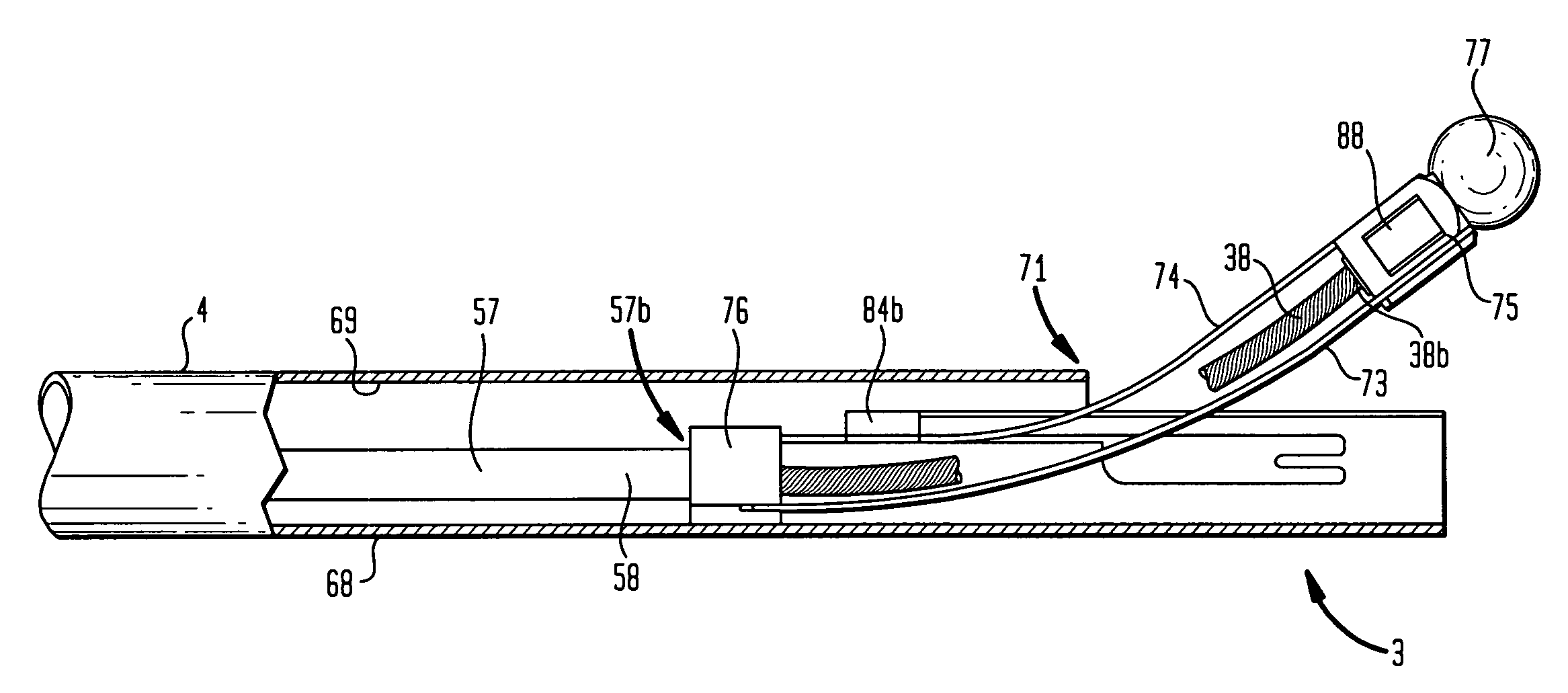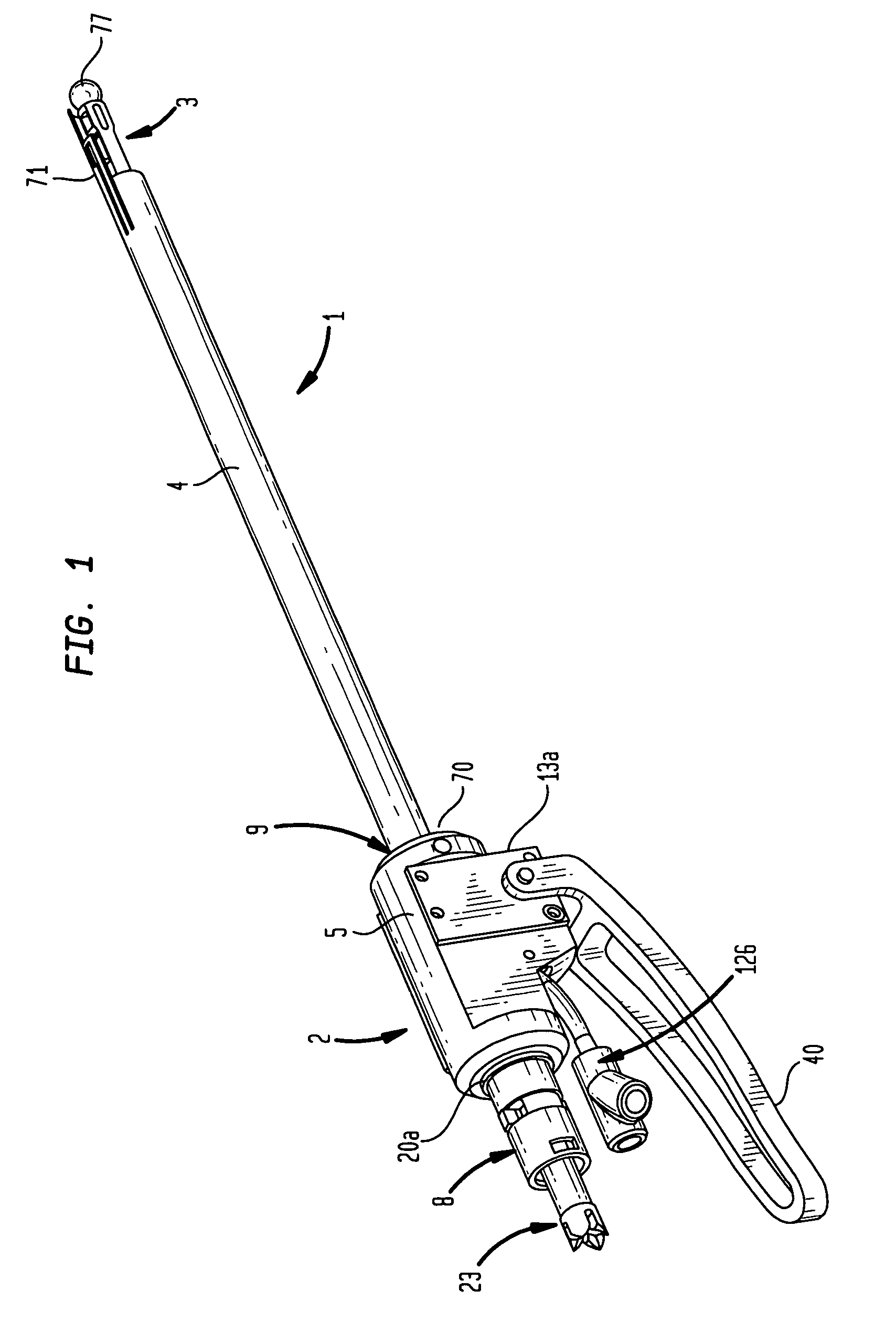Method and apparatus for removal of tissue
a tissue and tissue technology, applied in the field of surgical instruments, can solve the problems of cartilage perforation, femoral head collapse, target necrotic bone,
- Summary
- Abstract
- Description
- Claims
- Application Information
AI Technical Summary
Benefits of technology
Problems solved by technology
Method used
Image
Examples
Embodiment Construction
[0038]FIG. 1 is an exemplary surgical instrument 1 for removal of tissue, such as necrotic bone tissue from the femoral head of a hip joint, in accordance with an aspect of the present invention. The instrument 1 is operable for precise and selective removal of bone tissue within and outside a circumferential region defined by the distal end of the instrument 1. Referring to FIG. 1, the instrument 1 includes a power drive portion 2 on a first end 70 of a main tube 4 and an articulating cutting burr portion 3 on a second end 71 of the main tube 4.
[0039]Further referring to FIGS. 2, 3 and 4, the power drive portion 2 includes a main housing 5, a driver coupling connector 8, a drive fitting 23, a flexible shaft fitting 34, a lever 40, a hinge pin 46, a thrust fork 52, a thrust collar 63 and a thrust tube 57. The housing 5 includes a first bore 6 on a first end 7 for coupling with the driver connector 8, and a second bore 9 on a second end 10 opposite the first end 7 for coupling with t...
PUM
 Login to View More
Login to View More Abstract
Description
Claims
Application Information
 Login to View More
Login to View More - R&D
- Intellectual Property
- Life Sciences
- Materials
- Tech Scout
- Unparalleled Data Quality
- Higher Quality Content
- 60% Fewer Hallucinations
Browse by: Latest US Patents, China's latest patents, Technical Efficacy Thesaurus, Application Domain, Technology Topic, Popular Technical Reports.
© 2025 PatSnap. All rights reserved.Legal|Privacy policy|Modern Slavery Act Transparency Statement|Sitemap|About US| Contact US: help@patsnap.com



